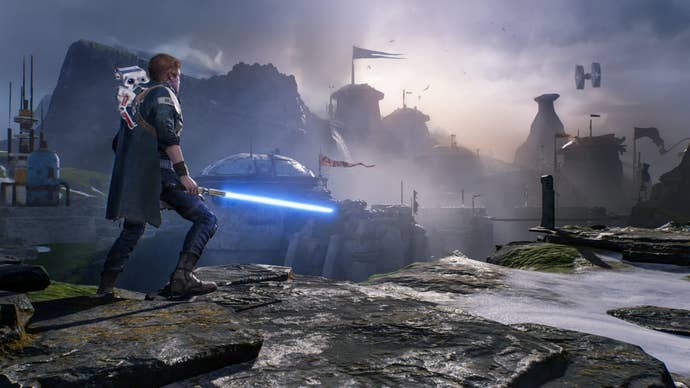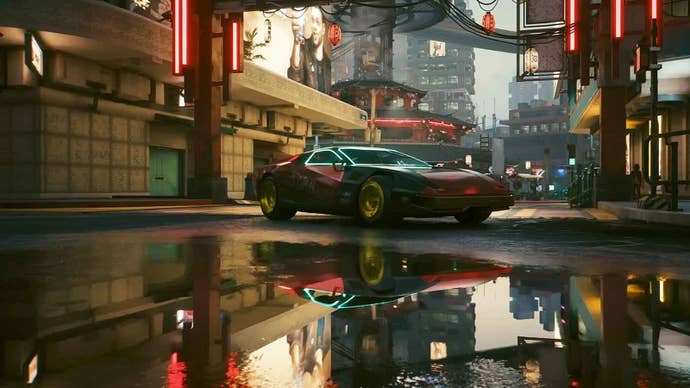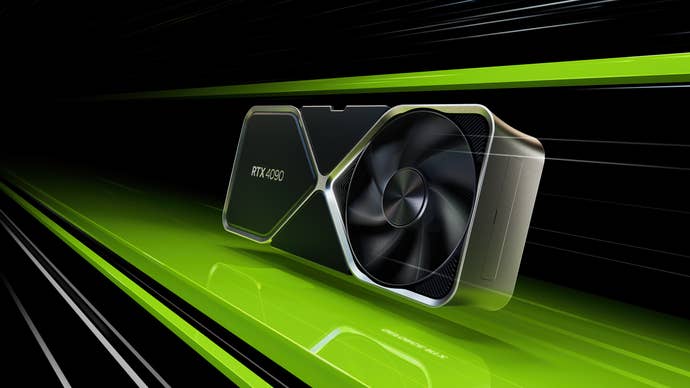The state of triple-A PC ports and the obscene prices of GPUs are ruining my favourite hobby
For years, building a PC – or even just upgrading the GPU –has always been one of my favourite things to do. But I am slowly falling out of love with it.
I never thought I’d be writing this, but the idea of building a new PC is nowhere near as exciting to me as it used to be. Putting together the right build, taking the budget as far as it could, hunting for deals, buying from different retailers just to save a bit of money (and the act of opening so many Chrome tabs that precedes all that) have always brought me so much joy.
Even down to building the PC myself, refusing to ever let someone else do it (even when it’s free) was something I took pride in. I don’t want to skip harvest day; I want to pick out the fruits of my labour, and put them all together to turn them into something more.
But it’s getting harder and harder to justify doing all that.
2023 has been a year with so many game of the year contenders seemingly releasing every month. It’s been a year of several major, big-budget triple-A releases that either debut new tech, advance existing ones to previously unseen degrees, or simply establish what we’ll look back on as a new standard.
As someone who always maintained a good PC, I’m always eager to test and play with all that new tech without worrying too much about making games, well, work. There has always been this unspoken rule in the world of PC gaming: you can throw money at whatever problem a game shipped with.
It’s not realistic to expect every triple-A game to launch flawlessly, but I think we’ve officially entered an absurd stage for the state of the most expensive games the industry produces. If Respawn has to put out an apology about the utter state of the PC version of Star Wars Jedi: Survivor on the day of its release, we have a major problem. It took the studio five months to get it to what I would consider an acceptable state, yet so many of its performance issues remain as fundamentally broken as they were at launch.
Immortals of Aveum, a big-boy triple-A Unreal Engine 5 game, ran very poorly on even the most highly-specced PCs. Remnant 2, another UE5 game, expects you to use upscaling to get a decent performance out of it.
Though it scales well, Lords of the Fallen still struggles with traversal stutters and various other issues that not even a PC with an RTX 4090 and a 7800X3D can do anything about. Forspoken shipped with inexplicable problems, and the same goes for Wo Long: Fallen Dynasty. Even the PC port of The Last of Us: Part 1 launched with clear issues that took months to resolve. While not your standard big blockbuster game, Cities: Skylines 2 devs outright said the game doesn’t run well before it even came out, but that it’s being released anyway.
Going back to the beginning of the year, the Dead Space remake suffered from major shader and traversal stutters (many of which have not been fixed), and some bizarre texture issues when turning on DLSS. Not even everyone’s favourite Resident Evil 4 was spared, having struggled with its own issues of stability when ray tracing was involved, and a few other hiccups that have since been fixed.

2023 has been one of worst years for PC ports I can remember, and I’d argue even worse than the days of Xbox 360 ports with two-settings options menus. These are major, tentpole releases that you cannot ignore.
Publishers have simply gotten too comfortable putting out unfinished games and charging full price for them. The trust is being eroded with every major game knowingly being released with such severe issues. The best time to play triple-A games now is very clearly four to six months later, when they’re much more stable (sometimes even playable), and a lot cheaper to boot.
That’s sadly not even where it ends, though. The PC hardware market has its own issues to contend with. Nowhere is that more evident than with GPUs. It is no longer possible to pick out a GPU you can feel good about; you’re either comprising, or going way outside your budget to feel like you’re hitting your performance targets.
Let’s start with Nvidia’s 40-Series line-up. The RTX 4060 is a $300 8GB GPU designed for 1080p. It is so underpowered for that price that Nvidia’s own benchmarks have to rely on DLSS frame generation – not even just upscaling – to paint it in a decent light. So, why not go a tier higher for better performance?
The RTX 4060 Ti is that step. Unfortunately, you’d be spending $100 more on another 8GB card! Not satisfied with just 8GB? Nvidia has you covered with the 4060 Ti 16GB that’s only $100 more. In effect, you’re trapped between a clearly overpriced product in the base 4060 Ti, and something that’s equally as overpriced that offers what the cheaper model should have. That is $500 for what’s maybe a 1440p GPU.

Anyone really after a 1440p GPU likely always goes for the 70-class, so that’s the RTX 4070. Nvidia somehow managed to ship a 70-tier GPU with less VRAM than its younger 60-class sibling, because the 4070 only has 12GB of VRAM, and sells for $600. Unlike with 4060 Ti, going for the 4070 Ti does not actually give you more VRAM, it just offers more performance for a cool $200 more, bringing us up to $800.
If you’re tired of all the compromises and inexplicable prices, you’re likely thinking of just biting the bullet and moving to the 80-class option. The RTX 4080 awaits, and it’s another overvalued GPU, with an MSRP of $1,200, meaning you would need to convince yourself to spend an extra $400 over the 4070 Ti.
The 4080 has 16GB of VRAM, and will do very well for your 1440p needs. What about 4K? It does okay there, too, if you’re willing to mess round with settings and make heavy use of DLSS. But there’s one more step in this hellish climb, and it’s the RTX 4090. The 4090 is the one card that doesn’t feel compromised in any way, you just can’t afford it.
The RTX 4090 launched with an MSRP of $1,600. It is the best gaming GPU that exists, and the most expensive. Surely, you think, you’ve convinced yourself to pay $1,200 for the overpriced 4080, why not go all the way and spend just $400 more to get the best of the best? Even that is unattainable in late November, 2023 as I write this, because thanks to US trade sanctions on AI-capable chips, the price of the 4090 has shot up to $2,000. I am sorry, that is more than the entirety of the rest of most PC builds it would be going into - and by a massive margin.
It used to be that the top GPU was 10-15% faster than the one below it. The Titan-class was always too expensive for what it offered, but it existed to justify the higher price of the one below it. Anyone who bought it knew that, they just did it because they could afford it and they wanted the best of the best. The 40 Series is the first time I’ve seen the very top end GPU be so much faster than the one below it that, somehow, it offers the best value for the money!

I cannot in good faith look at that clown show and feel good about buying a GPU. I used to love saving up for the next tier just to get the best performance I could afford. Now, the way the line-up is structured, coupled with the obscene prices of the current top-tier GPUs make none of it viable. And I know you’re going to shout “AMD”, but their ray tracing performance is frankly embarrassing so they’ve eliminated themselves from the race. AMD GPUs need to be a lot cheaper than their Nvidia counterparts to compete, I am talking 25-30% cheaper. That’s the only way I can justify leaving behind Nvidia’s excellent features, superior upscaling, and better ray tracing performance.
Then, of course, you take a step back from all that bargain hunting and price analysis to realise, it’s just not worth it. Imagine doing all that work only to end up struggling to get a solid 60fps in Jedi: Survivor on day one with a 4090! Or be asked to enable upscaling in every big new game because native resolution has somehow turned into a luxury.
No, thank you. If you spend $500 or so on a console, you know you’re not buying the best of the best, so when a game doesn’t run well, it’s at least not going to sting as hard.
